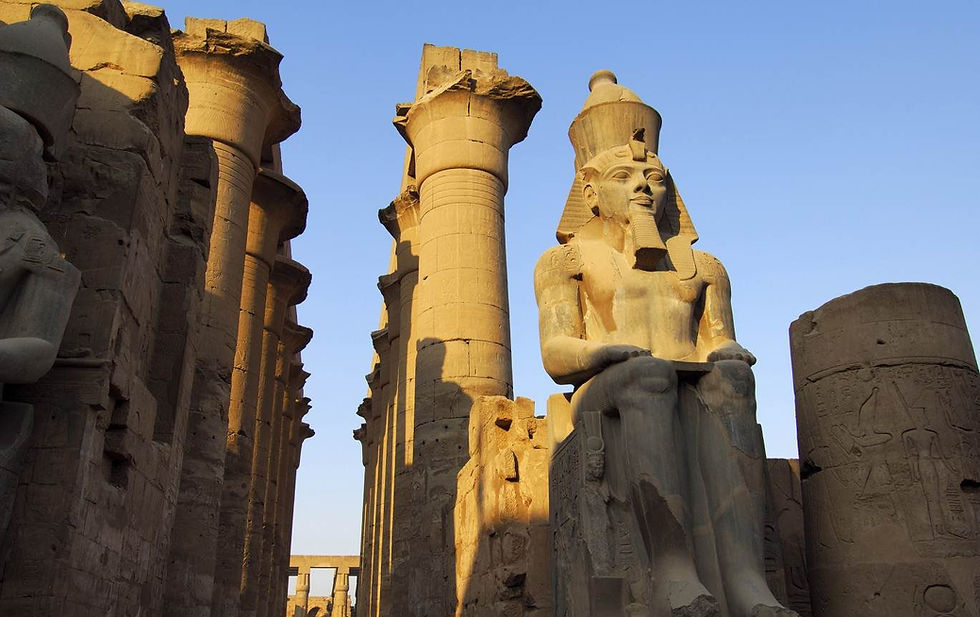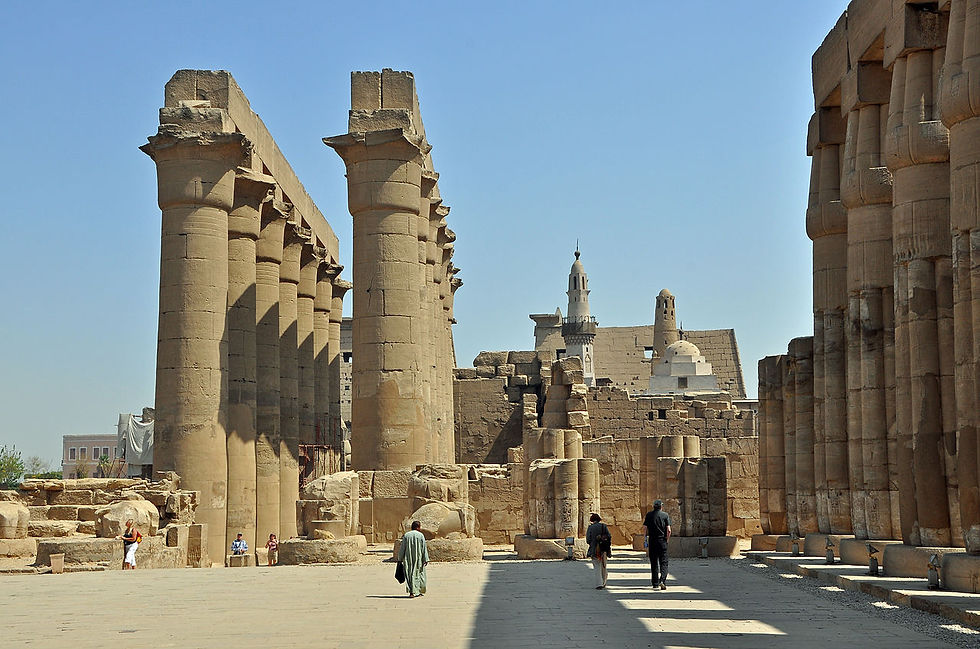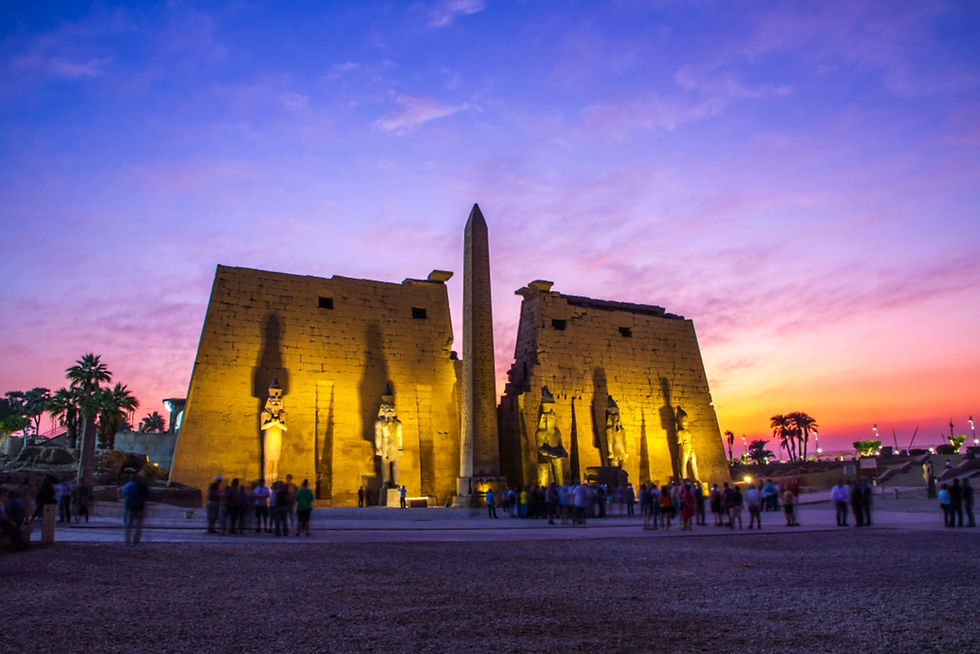Exploring Luxor Temple with a Nile Cruise
- Andrew Sobhy
- Sep 13, 2021
- 3 min read

Site History and Significance
Constructed over hundreds of years by Amenhotep III, Ramses II, Tutankhamun, and other pharaohs, Luxor Temple was the largest and most significant religious center in ancient Egypt. In what was then Thebes, Luxor Temple was “the place of the First Occasion,” where the god Amon experienced rebirth during the pharaoh’s annually reenacted coronation ceremony. Today, remains of this vast complex include the colossal Great Colonnade Hall, almost 61 meters long, with 28 twenty-one-foot-high columns, its decoration largely undertaken by Tutankhamun around 1330 B.C. Many of the temple’s sidewalls were torn down after the time of the pharaohs and recycled for building materials.

Visiting Luxor Temple
Like the rest of the ancient sites in Egypt, Luxor Temple is pure magic, and you don’t have to be a history buff to enjoy it.
That said, most people could probably walk through the whole temple in about 60 minutes or less, depending on your pace and how much time you spend soaking things up.
A good time to visit is early in the morning before the heat and crowds, or in the evening when the sandstone walls glow in the sunset.
After dark, the whole temple is lit up for an even more mystical effect!
Before Excavation Luxor Temple
Before excavation in the 1960s, the temple’s sandstone fragments were in direct contact with salt-laden groundwater that leached into the stone. After excavation, exposure to changes in humidity mobilized these salts and accelerated deterioration. Between 2001 and 2007, World Monuments Fund directed a grant from the Robert W. Wilson Challenge to Conserve Our Heritage to the conservation of Luxor Temple. Over 1,000 deteriorating blocks and inscribed wall fragments underwent consolidation and treatment, which arrested their decay and allowed for early stages of reconstruction.

The Colonnade Hall in Luxor Temple
An outer section of the eastern wall of the Colonnade Hall was stabilized with a brick buttress concealed with sandstone slabs in order to blend into the original stone of the temple. Another major group of 48 fragments, which completes the depiction of the divine barge and towboats of the hawk-headed moon-god Khonsu, was inserted into the base of that buttress where it joins the wall. A life-size statue of Ramesses II’s chief wife Queen Nefertari, intact to the knees, was recovered, cleaned, and protected. Missing portions of her legs were located, carefully returned to the statue, and also protected.

Thousands of Fragments
The thousands of sandstone fragments retrieved from the vicinity of Luxor temple contain carved and painted details of hieroglyphic texts and temple ritual scenes; once identified, documented, and consolidated, many have been joined and reassembled into whole wall scenes, as part of the Wilson Challenge Ancient Thebes Initiative. Also funded by this challenge initiative were the portico added to the Karnak Temple by Thutmosis III in 1400 B.C. and the Mortuary Temple of Amenhotep III in the Theban Necropolis.

Best Way & Things to See in Luxor Temple
Best Way to Explore Luxor Temple is through a Nile Cruise While You can enjoy relaxation and exploring Egypt with a wonderful 5 Stars Sailing Nile Cruise.
Inside the temple itself ,These are some of the main features to see at Luxor Temple:
The avenue of sphinxes at the front entrance
The pharaoh statues and main pylons (walls) with carvings showing Egyptian chariots in battle
The inner courtyard with its dozens of stone columns still standing
One of the top highlights for me was the huge 80 foot obelisk at the front of the temple. It’s got some of the best animal hieroglyphs at Luxor Temple.
There used to be two of these obelisks, but the other one is in Paris now.



Comments